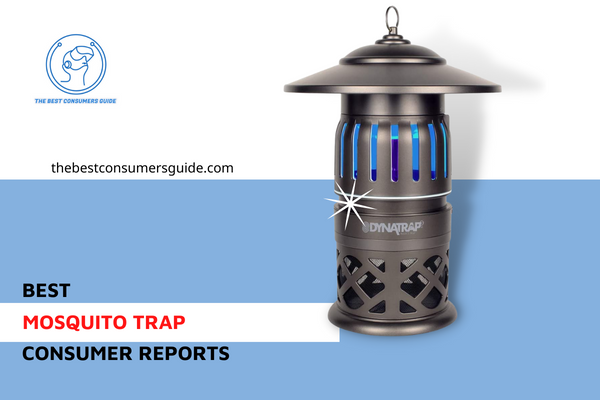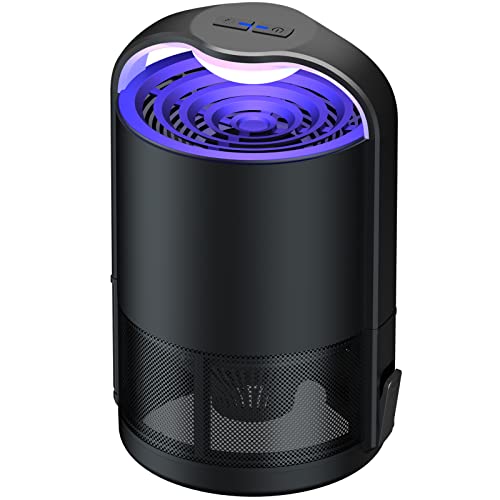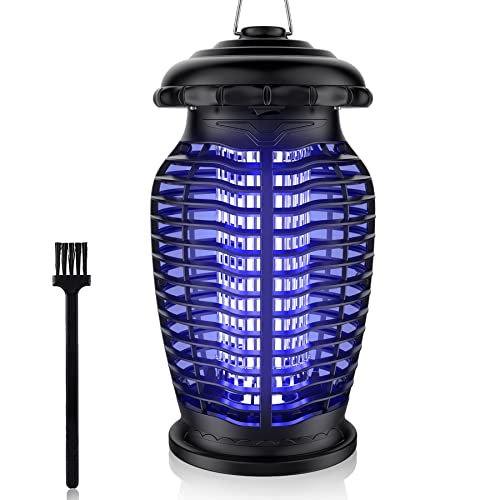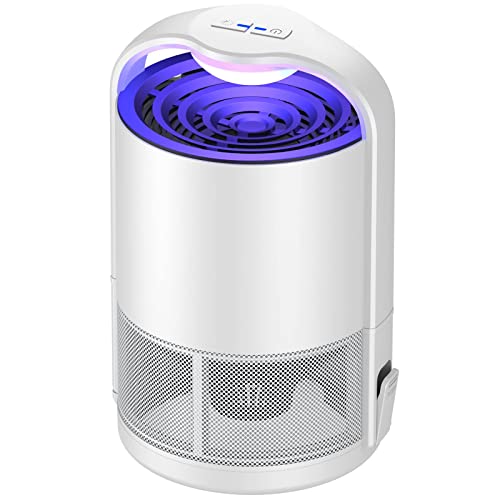Best Mosquito Trap Consumer Reports, Ratings, Reviews, Tips, and Guides in 2023
Summertime is synonymous with outdoor activities like barbecues, camping, and fishing. Unfortunately, it’s also when pesky mosquitoes emerge, looking for their next blood meal. If you’re looking for the best mosquito trap to help keep these insects at bay, then read on. In this post, we’ll review the top three models according to Consumer Reports’ rankings. And trust us – you won’t be disappointed with the results!

Top 10 Best Mosquito Trap to Buy in 2023:
Below is the list of top 10 Best Mosquito Trap that you can have a look at and buy. Check one by one carefully before purchasing.
*Note: Score is based on our AI score (Editor’s choice and rating)
What is Mosquito Trap?
Mosquito trap is a device that is placed in a room to trap mosquitoes. It consists of two chambers, one of which is filled with carbon dioxide while the other is filled with a mosquito larvaicide. The mosquitoes are attracted to the carbon dioxide, and when they enter the un-closed chamber, they die.
Benefits of Mosquito Trap:
Are you tired of getting bitten by mosquitoes? Do you want to keep them away from your family and home? If so, you need a mosquito trap! A mosquito trap is a simple, easy way to keep mosquitoes away from your home and family. Here are some of the benefits of using a mosquito trap:
1. Mosquitoes Are a nuisance. Mosquitoes can be a nuisance and a pain. They can bite you, and they can spread diseases. A mosquito trap can help keep mosquitoes away from your home and family.
2. Mosquitoes Can Be a Risk to Your Health. Mosquitoes can be a risk to your health. They can carry diseases, such as malaria, dengue fever, and West Nile Virus. A mosquito trap can help keep mosquitoes away from your home and family, and reduce the risk of contracting a disease.
3. Mosquitoes Can Cause Damage. Mosquitoes can cause damage to your home. They can bite through walls and screens, and they can leave behind bites that can become infected. A mosquito trap can help keep mosquitoes away from your home, and reduce the chance of damage.
4. Mosquitoes Can Cause Stress. Mosquitoes can cause stress. They can be annoying, and they can bring the heat. A mosquito trap can help keep mosquitoes away from your home, and reduce the stress caused by mosquitoes.
5. Mosquitoes Can Cause Discomfort. Mosquitoes can cause discomfort. They can be itchy, and they can cause a rash. A mosquito trap can help keep mosquitoes away from your home, and reduce the discomfort caused by mosquitoes.
The Best Mosquito Trap Buying Guide
Buying a Mosquito Trap can be a challenge. There are a lot of options on the market, and you need to make sure that you choose the best one for your situation. Luckily, there are a few things you can do to make the process easier and to ensure that you buy the best mosquito trap for your needs. First, you need to determine what attracts mosquitoes. Once you’ve determined this, you can determine the types of traps that are available and what they cost.
Attractants that attract mosquitoes
A mosquito attractant is one of the most effective ways to get rid of mosquitoes and prevent them from breeding. These devices work by emitting a scent that mosquitoes find irresistible. A good mosquito attractant should be able to reduce the number of insects in a yard by several times.
When choosing a mosquito trap, the first thing to do is determine how large an area you want to cover with the device. If the area is large, you may need several large units to properly control the mosquito population. For smaller areas, you might be able to get away with a small trap that attracts mosquitoes for a brief moment before they leave the area.
Another important feature to look for in a mosquito attractant is quality. A high-quality attractant should be made of high-grade materials that will last for many years. Cheaper products are typically made of cheaper materials and may not be as effective as their more expensive counterparts. Therefore, be sure to compare price tags and check the reputation of different brands and products.
If you want to make the most effective use of your mosquito trap, make sure you set it up as early as possible before mosquitoes become active. The most common times for mosquitoes to be active are at dawn and sunset. The insect trap should be set up at least 20 feet away from people or other areas where mosquitoes are likely to be active. The most effective mosquito trap attractant will be able to draw a large number of insects into the trap.
A good mosquito trap attractant should mimic the chemical make-up of a mosquito’s body. In addition to a good attractant, you should also ensure that the trap is windproof and water-resistant. The best mosquito traps are also made to withstand a high amount of wind.
If you are on a budget, it’s best to invest in a higher-quality mosquito attractant that is priced right for you. These devices are more reliable, last longer, and are easier to replace if necessary. The price tag on mosquito traps is often associated with quality, but that can be a false assumption. While it may be tempting to spend more, it may end up costing you more in the long run. As a rule of thumb, you should spend under $50 or $100 to get a decent mosquito attractant.
Another option for repelling mosquitoes is to buy a mosquito trap that does not emit chemicals. This method is safer for people who have small children or have a sensitive skin. They are also cost-effective, but you must consider the annual cost for electricity and attractants. Some mosquito traps emit UV light, which mosquitoes are attracted to.
Carbon dioxide emitters are also an option. Unlike water-based traps, carbon dioxide emitters also produce CO2. This gas is inflammable and must be used outside.
Types of mosquito traps
There are many types of mosquito traps available. Some traps use carbon dioxide to attract mosquitoes to the trap, while others use UV light to attract egg-laying females. Regardless of the type of mosquito trap, the effectiveness depends on where you place it. This is especially important for areas with high mosquito populations, where a single trap won’t make much of an impact.
If you’re looking for a simple indoor mosquito trap, you can try the Awoco wall mount sconce. This trap uses a sticky board and a UV lamp, along with CO2 and a 100-volt electrical circuit to keep mosquitoes from breeding. This mosquito trap is whisper-quiet, which makes it ideal for use in small areas.
Carbon dioxide traps are effective because they mimic human and animal breath, which attracts mosquitoes. They also trap mosquitoes by emitting octenol, which works on different kinds of mosquitoes. Other types of traps use light and heat to attract mosquitoes. Others release gases in a particular rhythm.
Gravid traps are popular in suburban and urban areas. This type of trap catches female mosquitoes that are actively seeking blood meals and laying eggs. Egg-laying mosquitoes are more likely to be infected with disease after their blood meal, so gravid traps are ideal for pre-service surveillance.
Mosquitoes can be a major problem for people living in urban areas, where urban areas are a common source of mosquitoes. Despite the prevalence of urban mosquitoes, conventional spraying is not effective, and only a few pesticides are approved for urban use. In addition, more mosquitoes have developed resistance to common pesticides. To combat the problem, scientists are using two different types of traps, one with a chemical to kill larvae and the other with a more targeted approach.
Mosquito traps are available for both outdoor and indoor use. Most traps are effective for controlling mosquito populations by targeting the egg-laying females. These traps work by mimicking the signals mosquitoes use to find blood. They also use UV light to attract mosquitoes and eliminate them.
In Europe, there have been several mosquito monitoring programs using different traps. The CDC trap, Biogents Sentinel (BG), and Acti Power Trap PV 440 were all tested, with the CDC trap proving to be the most effective. This type of trap was also used for collecting Aedes albopictus, a mosquito that can cause illness.
Light-emitting diodes (LEDs) have many advantages over a standard incandescent lamp. The light sources used in LED traps are inexpensive and produce a more attractive light. There are many different kinds of mosquito traps on the market, and each one has different advantages and disadvantages. The most effective trap depends on the size of the mosquito’s breeding area, the location, and the power source. Some traps are used outdoors while others are indoors.
Most mosquito traps require some form of maintenance. If they use propane, you will have to fill the tank on a regular basis. You will also have to clean the light and glue boards periodically. However, these tasks are relatively easy to remember and take only a few minutes.
Price of a mosquito trap
A mosquito trap is a useful tool to protect your property and yourself from the mosquito bite. The best traps mimic the body chemistry of mosquitoes and release various attractants in order to kill them. These devices can be used indoors and outdoors, and are made waterproof to keep the bugs out. Mosquito traps come with adjustable settings to target specific species. Ensure that you read the instructions carefully before using one. If you’re unsure of how to use the trap, it’s a good idea to contact the company’s support service to help you set it up properly.
There are many types of mosquito traps available, with each one promising up to 24 hours of efficacy. Some are light-based, while others use voltage to shock insects. Light-based traps may need to be hung from a high height. All models with lights or filters will need to be re-charged periodically.
Outdoor traps are most effective for large areas where mosquitoes congregate. They can also be used indoors in rooms with damp areas. Mosquitoes need a water source to lay their eggs, so place your mosquito trap near the source of water where mosquitoes are likely to be.
Mosquito traps can be expensive. The price of an outdoor trap can reach $200 or more, while a propane-powered trap can cost up to $850. The price of an indoor trap can vary from $40 to $150. Some mosquito traps also require gas bottles, which can be purchased from retailers or bottle depots.
Mosquito control services may require you to hire a professional. These services are usually a monthly fee that covers the costs of setting up the traps, setting them up, and applying the pesticide as needed. Typically, these services will cost you about $25 a month. Depending on the size of your property, one mosquito trap is required for every 5000 square feet of land.
Although a mosquito trap is not 100% effective, it is a useful addition to any home pest control toolkit. While there’s no guarantee of 100 percent success, the price of an indoor mosquito trap can be a worthwhile investment. With the right use and maintenance, a mosquito trap will keep your property protected from mosquitoes and other insects.
A carbon dioxide mosquito trap can mimic the smell of human or animal breath, an insect attractant that mosquitoes fear. The carbon dioxide in a mosquito trap also attracts female mosquitoes, which need blood to make their eggs. They need the blood to reproduce their eggs, so they are particularly desperate for a blood meal.
Common Mistakes When Using Mosquito Trap:
1. Not setting the trap properly.
Mosquito traps need to be set in a location where mosquitoes will be attracted to the device. The traps should be placed in areas where you or your family typically spends a lot of time, such as inside or outside, near the water’s edge, or near a source of standing water.
2. Not checking the trap often.
It is important to check the trap often to ensure that it is working properly. To do this, you will need to remove the trap from the location where it was set and pour a small amount of bait (such as sugar water) into the trap. If mosquitoes are attracted to the bait, the trap is working and you should replace it with a new one. If no mosquitoes are attracted to the bait, the trap is not working and you will need to replace it.
3. Not using the correct type of bait.
There are three types of mosquito traps: mechanical, electronic, and natural. Mechanical mosquito traps use a spring or weight to capture mosquitoes. Electronic mosquito traps use a electronic device to detect mosquitoes. Natural mosquito traps use a natural substance, such as sugar water, to attract mosquitoes.
4. Not using the correct mosquito trap.
There are three types of mosquito traps: mechanical, electronic, and natural. Mechanical mosquito traps use a spring or weight to capture mosquitoes. Electronic mosquito traps use a electronic device to detect mosquitoes. Natural mosquito traps use a natural substance, such as sugar water, to attract mosquitoes.
Maintenance and Cleaning of a Mosquito Trap
A mosquito trap is a device that uses light and heat to attract and capture mosquitoes. To keep your mosquito trap working effectively, it is important to regularly clean and maintain it.
To clean the mosquito trap, start by removing any dead mosquitoes from the inside. Then, use a damp cloth to wipe down the inside of the trap. Be sure to also clean the outside of the trap, as this can help prevent new mosquitoes from being attracted to it.
Once you have cleaned the trap, check all of the parts to make sure they are in good working condition. If any parts are damaged or not working properly, replace them before using the trap again.
To keep your mosquito trap effective, it is important to regularly clean and maintain it. By following these simple steps, you can help ensure that your mosquito trap will work when you need it most.
FAQ
How effective are mosquito traps?
As the summer months approach, so does peak mosquito season. In addition to being a nuisance, mosquitoes can pose a serious health risk by transmitting diseases like West Nile Virus and Zika. To protect yourself and your family from these dangers, you may be considering using a mosquito trap. But how effective are these traps really?
There are a variety of different mosquito traps on the market, each with its own unique design and features. But in general, most traps work by releasing a small amount of CO2, which mimics the human breath and attracts mosquitoes. The insects are then drawn into the trap where they are trapped and eventually killed.
So, do mosquito traps actually work? The answer is yes – but not 100% of the time. These devices can be quite effective at reducing the population of mosquitoes in your yard or patio area. However, they will not completely eliminate all mosquitoes from an area. Additionally, some people find that certain types of traps are more effective than others. Ultimately, it may take some trial and error to find the right trap for your needs.
Why is heat used in mosquito traps?
There are a few reasons why heat is used in mosquito traps. First, mosquitoes are attracted to heat, so using heat in a trap makes it more likely that they will be drawn to it. Additionally, heat can help to kill mosquitoes, which can reduce the population of mosquitoes in an area. Finally, using heat in a trap can help to keep the trap itself clean, as the heat can help to prevent the build-up of mosquito eggs and other debris.
How long do mosquito traps take to work?
The answer depends on a few factors, including the type of trap you have, the size of the area you’re trying to cover, and the density of the mosquito population. Generally speaking, though, you can expect mosquito traps to start working within a few days to a week.
If you have a small yard or home, or if there aren’t many mosquitoes around, you may see results more quickly. On the other hand, if you have a large property or a high density of mosquitoes, it may take longer to see results. Either way, mosquito traps are an effective way to reduce the number of these pests in your area.
How many times can 1 mosquito bite you?
A single mosquito can bite you multiple times. In fact, mosquitoes are capable of biting people up to 500 times in their lifetime. However, the number of bites a mosquito can give you in one sitting depends on several factors, including the size of the mosquito and your blood type.
For example, a large mosquito can bite you more frequently than a small one. And if you have type O blood, mosquitoes are more likely to bite you than someone with type A or B blood. So if you’re wondering how many times a mosquito can bite you, the answer is: it depends.
Do mosquitoes sleep at night?
This is a question that many people have, as mosquitoes are known to be pests that bite people and animals alike. While it is true that mosquitoes are more active during the daytime, they can also bite at night.
So, do mosquitoes sleep at night? The answer is yes and no. While mosquitoes do rest during the nighttime hours, they are not truly asleep. They will remain inactive until they sense the presence of a potential host, at which point they will become active again in order to feed.
While it is possible for mosquitoes to bite at night, they are more likely to do so during the daytime when they are more active. If you are concerned about being bitten by a mosquito, it is best to take precautions during the daytime hours.
Conclusion
The best mosquito trap ultimately comes down to personal preference. Do you want a model that is foolproof or one that gives you more control? What’s your budget? Our top three picks offer different advantages, so be sure to read the full reviews before making your final decision. No matter which product you choose, following the consumer reports guidelines will help ensure you get the most out of your purchase.
I’m Georgie Barton, a reviewer for various magazines and consumer reports. I’ve been testing and writing about household products and electronics for years, and have become quite the authority on the subject. My goal is to help people make informed decisions when purchasing these items, so they can get the most value for their money.
My hope is that through my work, everyone will be able to find a quality and satisfactory product. Thank you for reading!










